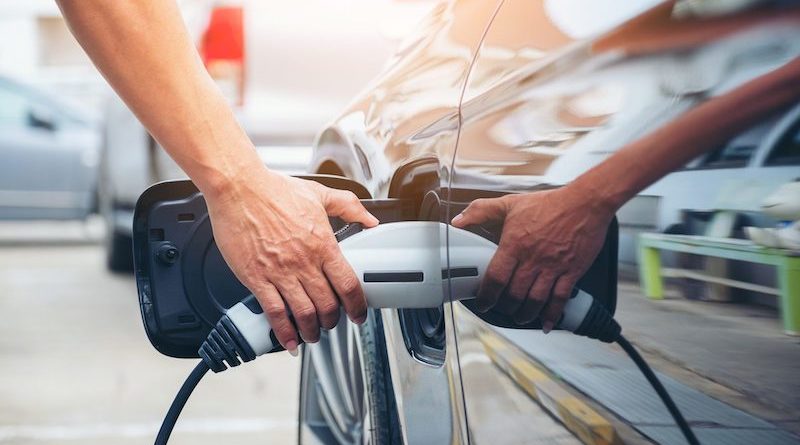
Driving the EU towards sustainable automotive mobility
With the “Fit for 55” package, the European Union (EU) is set to embark on its ambitious goal to achieve carbon neutrality by 2050. Making up nearly one quarter of total emissions, the transport sector alone will need to achieve a 90% reduction from today’s levels in greenhouse gas emissions (GHG) over the next 30 years. With cars and light commercial vehicles accounting for three quarters of total transport emissions in Europe, the proposed revision of the Regulation setting CO2 emissions performance standards for cars and light commercial vehicles deserves close attention, not least with regards to its environmental, industrial, social, infrastructural and financial implications.
In particular, the target set to zero emissions for all new passenger cars by 2035 could have disruptive consequences, as it implies in practice the ban of internal combustion engine (ICE) vehicles.
Setting high targets is one thing, paving a realistic way to achieve them is another. Beyond strong political announcements, sound and coherent policymaking is more needed than ever.
How can Europe decarbonise its transport sector without jeopardising its industrial competitiveness? How to guarantee a fair access to clean mobility to all EU citizens?
Delivering on those objectives will be crucial to answer Europe’s environmental sustainability imperative. This is about ensuring the automotive industry’s fair contribution to the fight against climate change. At the same time, minimising hazardous externalities and addressing potential undesired effects should be part of wider considerations around this proposed revision, and the “Fit for 55” package more generally. This is even more true when considering the potential ramifications for the economic and industrial competitiveness of Europe’s leading industries, of which the automotive industry constitutes a perfect example.
In the EU, the automotive industry contributes to 7% of GDP with 14.6 million jobs at hand. It is also at the forefront of technological innovation relevant to the EU’s twin transition with no less than 60.9 billion euros invested annually in R&D.
With the help of significant investments, it is already embracing cleaner and leaner solutions, including zero- and low-emission technologies as well as connected vehicles. At the same time, it faces increasing regulatory hurdles in the context of fierce international competition. As the EU’s automotive industry is set to embark on its own transformation, it is crucial to be mindful of the important repercussions for this industry’s competitiveness and resilience as preconditions for the future mobility of European citizens.
The bigger picture
The global objective is to reduce the CO2 emission from cars. As new solutions enter the market, tail pipes’ contribution to emissions will lessen whilst other emission generating activities are likely to perdure. The proposed revision should reflect this reality if it is to retain its relevance in addressing future sustainability challenges.
However, as it stands, the proposed revision only focuses on the reduction of vehicles’ tail pipe emissions. This so-called “tank to wheel” (TTW) approach fails to take into account an essential subrange of emission-generating activities. These include the production of the energy source (be it fuel or electric), as well as the supply of this source to the refuelling or charging point. It also does not account for emissions generated through the production of vehicle components and the transport emissions generated through import activity. Excluding these factors yields a skewed picture of real generated emissions as measured across the lifecycle of a vehicle.
Moving away from TTW in favour of the so-called “well to tank” (WTT) measurement, alongside with a life-cycle assessment (LCA) of the vehicles’ emissions approach, would ensure a coherent and holistic approach to the issue of emissions reduction, while avoiding distortive effects and possible contradictions or loopholes.
This methodology would guarantee to monitor and reduce the complete emissions of the sector under one single framework.
Avoiding critical dependencies
The transition towards cleaner technologies should be welcomed and encouraged as part of the EU’s wider decarbonisation agenda. In a context of growing scarcity of fossil fuel resources, reducing Europe’s dependency on fossil fuels is particularly welcome, not only in terms of emissions reduction, but also with a view to mitigate current trade imbalances and vulnerabilities.
Nevertheless, a premature bet on one single technology, as suggested by the European Commission, entails many risks. Batteries represent a case in point. First, the supply-chain is not secured for the EU market, particularly for raw materials. With battery production expected to be multiplied globally by 20 over the next 30 years, the current trends may end up looking very different amid increasingly uncertain geopolitical trends, with all of what this entails for the pricing of materials. Access to raw materials has already become a major subject of international competition.
The current shortage of batteries and their subcomponents should lead Europe to think twice.
In a worst case scenario, a radical and precocious shift to one technology such as electric cars without ensuring the appropriate level of European industrial maturity and development would result in increased reliance on imports and dependence on third states, ready to defend their own strategic interests. In such a scenario, relying on one single green solution would amount to a mere temporary illusion, while in reality entailing grave consequences for the EU’s objective of reducing its carbon footprint and enhancing its strategic autonomy.
The principle of technological neutrality
With this in mind, what can be done for the EU to go ahead with the transition without falling into the dependency trap amid looming uncertainties? Europe will need to accompany industry’s transition through the development of competitive and resilient supply chains and competitive industrial ecosystems. Similarly, alternative decarbonising technologies such as advanced biofuels or synthetic fuels exist and can be used in a complementary way to electricity.
A “one size fits all” approach will not work for the Union considering its wide economic, social, geographical diversity within and between Member States. With a basket of different solutions, each region and situation should take advantage of the most fitting solutions to tackle emissions.
Therefore, it is important for the Union to defend a technologically agnostic approach, focusing on reducing emissions across the life cycle of the automotive industry but leaving the means on how to do so to manufacturers while ensuring sufficient diversity of technological alternatives is available. Such a technologically-agnostic approach would ensure the most cost-effective solutions by letting market mechanisms determine which technologies drive optimal market adoption, while guaranteeing affordable access to all rather than the few.
The challenge of infrastructure deployment
Infrastructure deployment should reflect the need for a technologically agnostic approach, making full use of all complementary solutions rather than solely relying on one technology. The European Commission aims to have 1 million public charging points for electric vehicles by 2025. The rollout of electric vehicles requires a simultaneous deployment of accessible charging infrastructure. However, it’s a chicken and egg issue since their development goes hand-in-hand. Simply setting unrealistically high objectives risks not achieving the desired effect, particularly in Member States with less means. There is a substantial risk of missing the mark, even in large Member States like France who are already lagging behind on existing targets. The availability of charging stations varies greatly between Member States, putting the objective of achieving a fair and inclusive transition towards clean mobility into jeopardy. At the end of the day, this is about ensuring that mobility is available to every European citizen, regardless of their nationality nor income.
Funding the transition
There can be no transition without funding. The automotive sector is already actively investing in its own decarbonisation; but the burden of new, far more ambitious targets should not fall exclusively onto manufacturers. A case in point concerns the reskilling of workers due to the abandoning of thermal combustion in favour of electric solutions. Phasing out the production of fossil fuel vehicles will require institutional backing for reskilling programmes to help manufacturing workers adapt as the industry makes a tremendous shift. Furthermore, appropriate funding should be made available to boost research and innovation programmes in order to speed up the sector’s green and digital transition, while preserving Europe’s industrial competitiveness.
Europe has the ability to be at the forefront of a smart and ambitious industry decarbonisation roadmap. By mobilising all relevant policy tools and appropriates levels of funding, the EU can take a big step in shaping the automotive industry’s future competitiveness in a net zero emissions future.
In doing so, we should be careful not to steer all efforts into one solution and instead develop balanced and viable policy alternatives able to guarantee the future mobility of all EU citizens.




